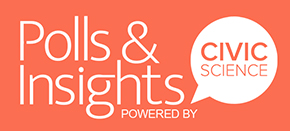In a recent survey of 4,035 U.S. users, CivicScience explored the habits of binge-watching TV, revealing stark contrasts between those who indulge frequently and those who rarely do. The survey found that 21% of respondents admitted to staying up unreasonably late to binge-watch TV all the time, while 44% rarely, if ever, engage in this behavior.
Demographic insights highlight intriguing differences. Among those who binge-watch all the time, 61% are female, and 39% are male. In contrast, the rarely binge-watching group is predominantly male, at 55%. Age also plays a role, with frequent binge-watchers mostly aged 35-44, while those who rarely binge-watch are predominantly 65 or older.
Take our Poll: How often do you stay up unreasonably late binge-watching TV?
Income levels further distinguish these groups. Frequent binge-watchers often earn between $50,000 and $74,999 or $100,000 and $149,999. Meanwhile, those who rarely binge-watch are more likely to earn $100,000 to $149,999. Urbanicity shows that frequent binge-watchers are equally likely to reside in cities or suburbs, whereas those who rarely binge-watch predominantly live in suburban areas.
Parental status reveals that 34% of frequent binge-watchers are parents, while 47% are neither parents nor grandparents. In contrast, 40% of those who binge-watch here and there are parents, indicating a potential link between parental responsibilities and binge-watching habits.
Education levels also vary. Frequent binge-watchers have diverse educational backgrounds, with 25% having some college education but no degree. Those who rarely binge-watch are more likely to hold a bachelor’s degree, at 29%.
These findings offer a glimpse into the diverse factors influencing binge-watching habits. The data suggests that age, gender, income, and education significantly impact how often individuals choose to stay up late for TV. As streaming services continue to grow, understanding these patterns can help tailor content to different demographics.
This article’s data comes solely from CivicScience’s database, which contains nearly 700,000 poll questions and 5 billion consumer insights. Our AI content creation tool, DataScribe, supported the article.


